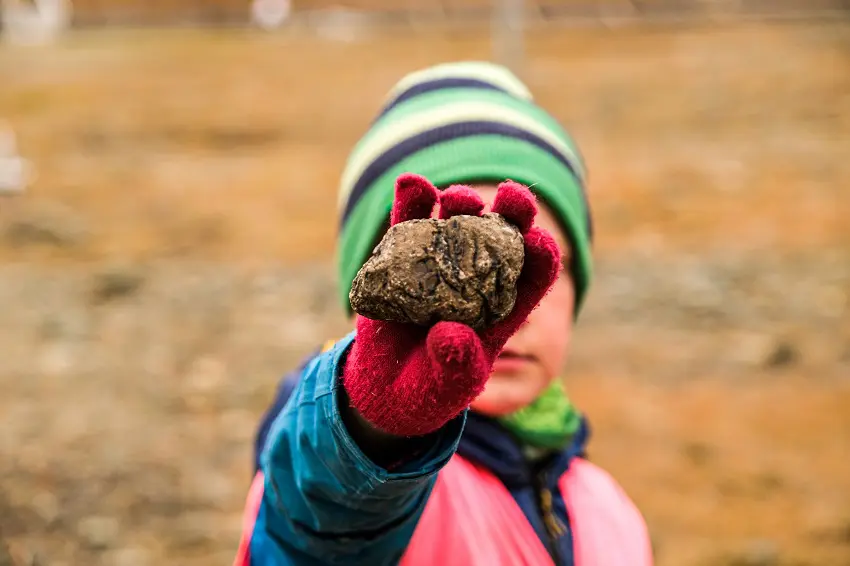New kids on the rock
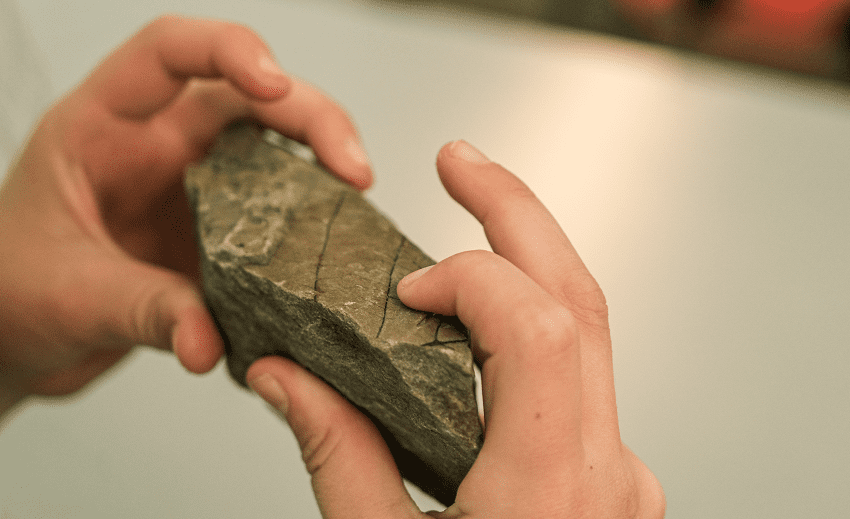
Aspiring geologist? A 5-year-old at Longyearbyen primary school checks out the 65 million year old fossils in a rock.
Top image: Aspiring geologist? A 5-year-old at Longyearbyen primary school checks out the 50 million year old fossils in a rock. Photo: Maria Philippa Rossi/UNIS
Geology student Guro Lilledal Andersen had her work chiseled out for her as she visited Longyearbyen Primary School’s first graders. Her mission: teach the youngsters why rocks rock.
19 October 2021
Text: Maria Philippa Rossi
The first graders entered the classroom after recess and looked curiously at Guro.
– Do you have rocks in there? someone asked, pointing at her big, heavy bag.
– Are you gonna show us?
Be patient, dear little ones. Good things come to those who wait. Ehm…50 million years…
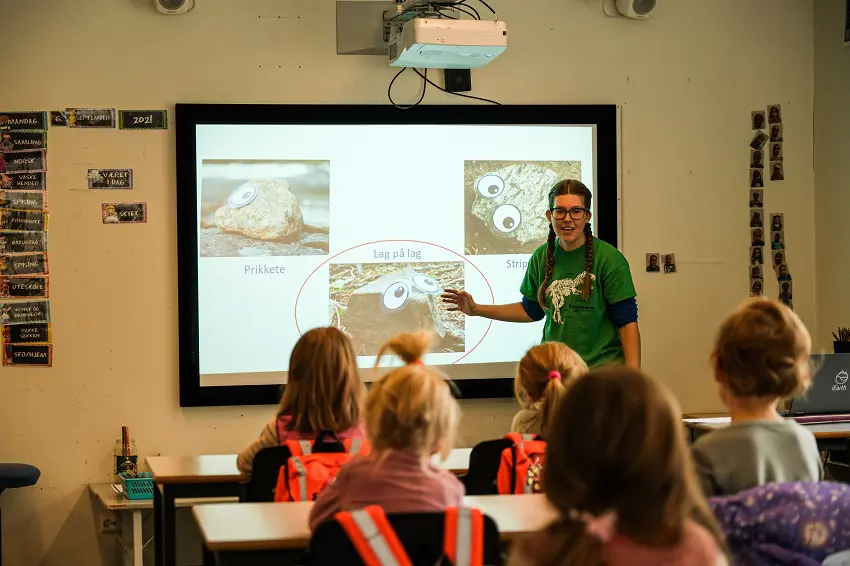
Study opportunities in Svalbard
Guro is 21 years old, originally from Skien in south-eastern Norway. She grew up in what she calls a “Silurian coral reef” and spent her spare time looking for fossils with friends.
– Growing up in such a diverse geological area, my interest in rocks, fossils and volcanoes – you know, all the cool stuff – started early. I started with geo-science subjects in high school and continued to University of Oslo where I’m studying the last year of my geology bachelor.
As UNIS cooperates with other universities, Guro experienced that many of her lecturers had tales to tell about Svalbard.
– Originally, I was planning to go abroad on exchange, but then Covid-19 came. A lot of my lecturers have done fieldwork on Svalbard, so I started exploring the possibilities there.
Guro tells that the subjects she’s doing aren’t so relevant for her future studies, and that’s exactly why it’s so important for her to take them.
– As a geo-scientist in the community, I think it’s very important to know things beyond the fields I plan to nerd about. I chose to do a summer course even though I didn’t need the ECTS credits. To have knowledge about how the climate impacts the environment on Svalbard is very important. The public can to a certain degree understand the changes, and we, as young scientists can help communicate the information to the younger generations.
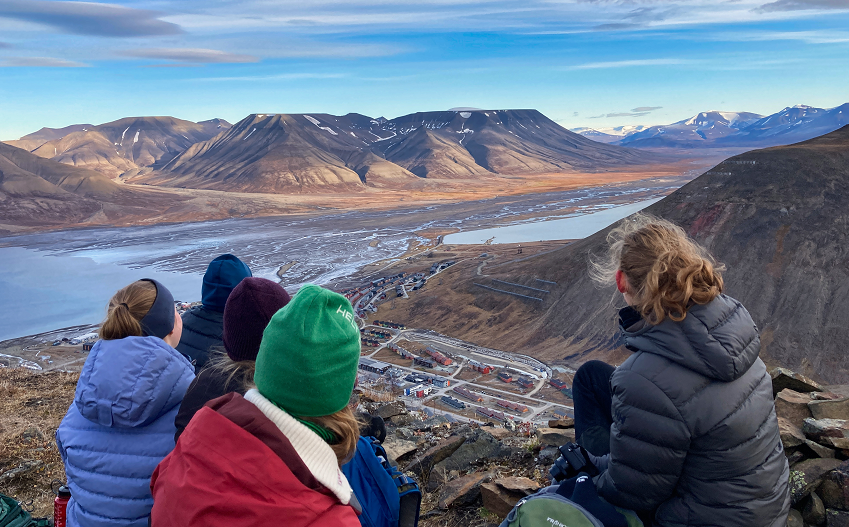
A ton of patience
Have you ever tried teaching 6-year-old’s about rocks? Well, basically about anything? Guro quickly realised the key to getting information across was patience. As she asked what “rocks” was, the answers ranged from “diamonds” to “deadly weapons.” Which really, is true.
Guro took the children through the three main different types of rocks we have in Norway: striped, dotted and layered. The ones that are typically found in Svalbard is layered rocks.
She arrived over the summer and lived in Nybyen. For a geology student, that’s Mekka.
– To be able to go out your front door and immediately find plant fossils was so exotic. It’s a magical landscape, as if taken straight out of Lord of the Rings. The colours are magic, and although there’s little vegetation there’s plenty of colours in the wild.
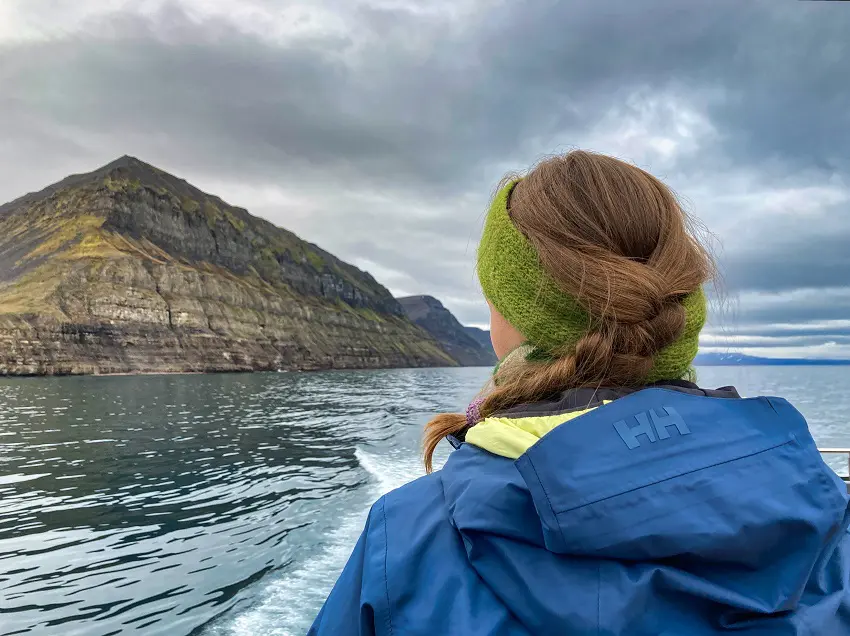
How old are you?
One of the general challenges with understanding geology is how quickly the rocks turn older. And not just 5 or 10 years, but millions, which for a 6-year-old is more or less the same as infinity. How do you explain it? Guro holds up some fossils.
– These are modern fossils, just 50 million years old.
She laughs. Because 50 million years would make most people grey-haired. She then stands up in front of the class, and asks the pupils to do the same.
– Imagine your body is the total time the world has existed. The sole of your feet is when the world came to existence.
She points at her knee.
– This is when the trilobites lived.
At her torso.
– The first dinosaurs started walking around on earth.
And this, and she points at the very tip of her hair.
– This is when people evolved. We’ve just been around for a very, very short time.
– Can we see the rocks now? someone chirped.
More fun outdoors
After a show and tell inside where the children got to look at fossils, it was time to go outdoors. Because, that’s the beauty of Svalbard – you have the field work arena just outside your doorstep.
Wow, was that a popular activity. Just seconds after the children were let out of the school yard (you know, fenced area to protect against polar bears) they were all over the place running back and forwards to Guro with different rocks they want analysed.

Guro attended a summer course and says that she loved the fieldwork part of it. Her class spent a week at Linnévannet.
– The environment in the group was great. We were curious about what we experienced around us. We got up early, had long days in the field with little spare time, but it was very rewarding. Everyone had their own research project, and the presentations afterwards were incredible. To see what people had accomplished in so little time was amazing. There was some great science happening!
Guro says that she likes the experience of doing fieldwork, writing a paper and then presenting it. It’s a collaboration with others, not just chew-spit-forget the information. And she wants to catch ‘em young and inspire children to get into natural sciences.
Start science communication early
– I want to communicate science to the public, I think it’s our social responsibility to convey what we do. Science communication is an important task that I would like to work with in the future. I want people to be curious about what we have around us, and geology is definitively something to be curious about.
Guro says that geology is everywhere, and by getting a little insight, the rocks you step on every day will tell you something.
– Kids love to go hiking and find rocks that have been parts of an ancient volcano. If children get a positive association for the natural sciences when they are young, it’s easier to keep the interest when they grow older.
She is nearly overrun by a new group of children surrounding her.
– Is this a stripy rock? How about that? Is that a dotted one? This one is layered, right? Is it? Is it?
– Thaaat’s probably just a piece of concrete…
